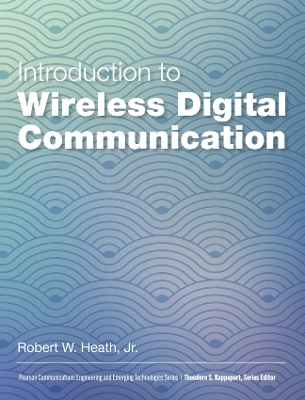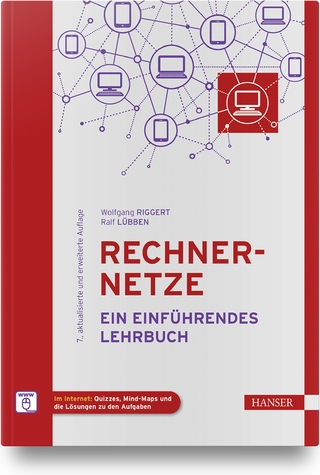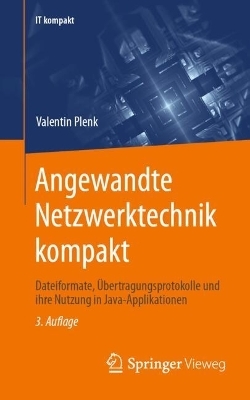
Introduction to Wireless Digital Communication
Pearson (Verlag)
978-0-13-443179-6 (ISBN)
Wireless communication is a critical discipline of electrical engineering and computer science, yet the concepts have remained elusive for students who are not specialists in the area. This text makes digital communication and receiver algorithms for wireless communication broadly accessible to undergraduates, graduates, and practicing electrical engineers. Notably, the book builds on a signal processing foundation and does not require prior courses on analog or digital communication.
Introduction to Wireless Digital Communication establishes the principles of communication, from a digital signal processing perspective, including key mathematical background, transmitter and receiver signal processing algorithms, channel models, and generalizations to multiple antennas. Robert Heath’s “less is more” approach focuses on typical solutions to common problems in wireless engineering.
Heath presents digital communication fundamentals from a signal processing perspective, focusing on the complex pulse amplitude modulation approach used in most commercial wireless systems. He describes specific receiver algorithms for implementing wireless communication links, including synchronization, carrier frequency offset estimation, channel estimation, and equalization. While most concepts are presented for systems with single transmit and receive antennas, Heath concludes by extending those concepts to contemporary MIMO systems.
To promote learning, each chapter includes previews, bullet-point summaries, examples, and numerous homework problems to help readers test their knowledge.
Basics of wireless communication: applications, history, and the central role of signal processing
Digital communication essentials: components, channels, distortion, coding/decoding, encryption, and modulation/demodulation
Signal processing: linear time invariant systems, probability/random processes, Fourier transforms, derivation of complex baseband signal representation and equivalent channels, and multi-rate signal processing
Least-squared estimation techniques that build on the linear algebra typically taught to electrical engineering undergraduates
Complex pulse amplitude modulation: symbol mapping, constellations, signal bandwidth, and noise
Synchronization, including symbol, frame, and carrier frequency offset
Frequency selective channel estimation and equalization
MIMO techniques using multiple transmit and/or receive antennas, including SIMO, MISO, and MIMO-OFDM
Register your product at informit.com/register for convenient access to downloads, updates, and corrections as they become available.
Robert W. Heath, Jr., received B.S. and M.S. degrees from The University of Virginia in 1996 and 1997, respectively, and a Ph.D. from Stanford University in 2002, all in electrical engineering. From 1998 to 2001, he was a senior member of the technical staff and then a senior consultant at Iospan Wireless, Inc., where he worked on the design and implementation of the physical and link layers of the first commercial MIMO-OFDM communication system. He is a Distinguished Professor in the Department of Electrical and Computer Engineering at North Carolina State University. He is also the president and CEO of MIMO Wireless Inc. His research interests include several aspects of wireless communication and signal processing: 5G cellular systems, MIMO communication, millimeter wave communication, adaptive video transmission, manifold signal processing, as well as applications of wireless communication to automotive, aerial vehicles, and wearable networks. He is a coauthor of Millimeter Wave Wireless Communications (Prentice Hall, 2015) and author of Digital Wireless Communication (National Technology and Science Press, 2012). Dr. Heath is a coauthor of several best-paper award recipients, including recently the 2010 and 2013 EURASIP Journal on Wireless Communications and Networking best paper awards, the 2012 Signal Processing Magazine best paper award, a 2013 Signal Processing Society best paper award, 2014 EURASIP Journal on Advances in Signal Processing best paper award, the 2014 Journal of Communications and Networks best paper award, the 2016 IEEE Communications Society Fred W. Ellersick Prize, and the 2016 IEEE Communications and Information Theory Societies Joint Paper Award. He was a distinguished lecturer in the IEEE Signal Processing Society and is an ISI Highly Cited Researcher. He is also an elected member of the Board of Governors for the IEEE Signal Processing Society, a licensed amateur radio operator, a private pilot, and a registered professional engineer in Texas.
Preface xiii
Acknowledgments xvii
About the Author xix
Chapter 1: Introduction 1
1.1 Introduction to Wireless Communication 1
1.2 Wireless Systems 2
1.3 Signal Processing for Wireless Communication 14
1.4 Contributions of This Book 17
1.5 Outline of This Book 18
1.6 Symbols and Common Definitions 20
1.7 Summary 22
Problems 23
Chapter 2: An Overview of Digital Communication 27
2.1 Introduction to Digital Communication 27
2.2 Overview of a Wireless Digital Communication Link 28
2.3 Wireless Channel 31
2.4 Source Coding and Decoding 36
2.5 Encryption and Decryption 40
2.6 Channel Coding and Decoding 41
2.7 Modulation and Demodulation 47
2.8 Summary 57
Problems 57
Chapter 3: Signal Processing Fundamentals 63
3.1 Signals and Systems 63
3.2 Statistical Signal Processing 91
3.3 Signal Processing with Passband Signals 114
3.4 Multirate Signal Processing 129
3.5 Linear Estimation 137
3.6 Summary 150
Problems 151
Chapter 4: Digital Modulation and Demodulation 171
4.1 Transmitter for Complex Pulse-Amplitude Modulation 171
4.2 Symbol Mapping and Constellations 174
4.3 Computing the Bandwidth and Power of x(t) 182
4.4 Communication in the AWGN Channel 183
4.5 Digital Implementation of Pulse Shaping 202
4.6 Summary 207
Problems 208
Chapter 5: Dealing with Impairments 219
5.1 Frequency-Flat Wireless Channels 220
5.2 Equalization of Frequency-Selective Channels 241
5.3 Estimating Frequency-Selective Channels 259
5.4 Carrier Frequency Offset Correction in Frequency-Selective Channels 270
5.5 Introduction to Wireless Propagation 282
5.6 Large-Scale Channel Models 285
5.7 Small-Scale Fading Selectivity 292
5.8 Small-Scale Channel Models 302
5.9 Summary 309
Problems 310
Chapter 6: MIMO Communication 335
6.1 Introduction to Multi-antenna Communication 335
6.2 Receiver Diversity for Flat-Fading SIMO Systems 343
6.3 Transmit Diversity for MISO Systems 353
6.4 MIMO Transceiver Techniques 364
6.5 MIMO-OFDM Transceiver Techniques 386
6.6 Summary 394
Problems 395
References 399
Index 427
| Erscheinungsdatum | 29.04.2017 |
|---|---|
| Sprache | englisch |
| Maße | 189 x 232 mm |
| Gewicht | 753 g |
| Themenwelt | Mathematik / Informatik ► Informatik ► Netzwerke |
| Technik ► Nachrichtentechnik | |
| ISBN-10 | 0-13-443179-0 / 0134431790 |
| ISBN-13 | 978-0-13-443179-6 / 9780134431796 |
| Zustand | Neuware |
| Haben Sie eine Frage zum Produkt? |
aus dem Bereich


